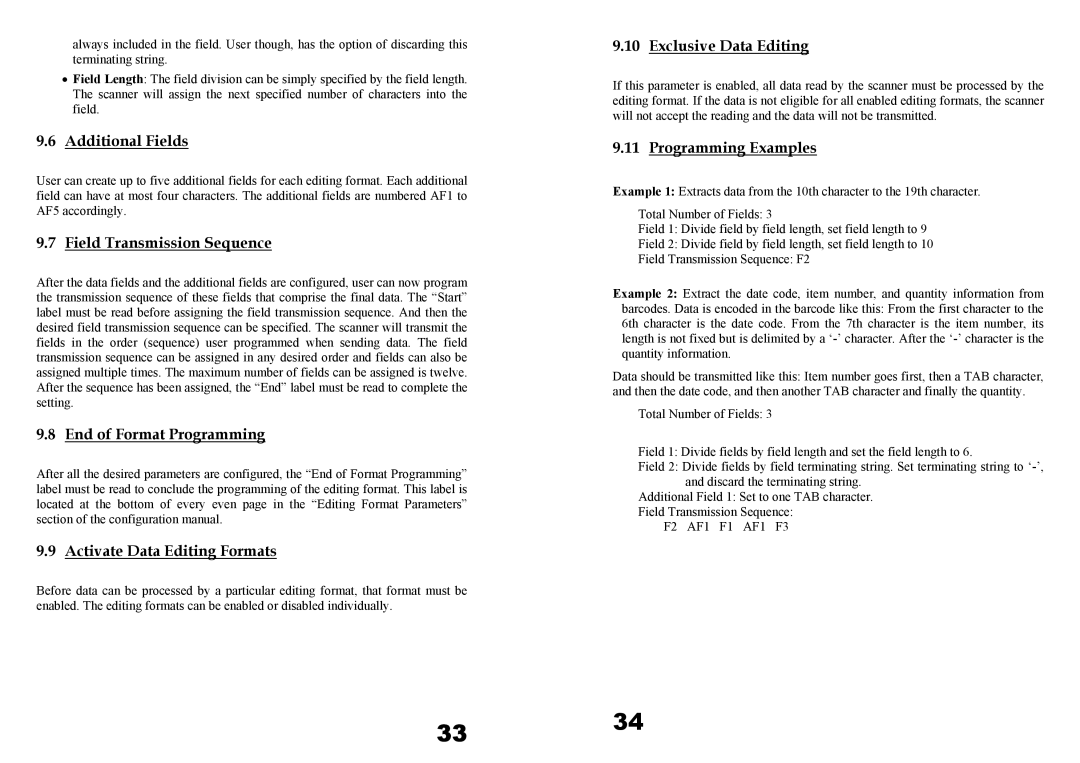always included in the field. User though, has the option of discarding this terminating string.
•Field Length: The field division can be simply specified by the field length. The scanner will assign the next specified number of characters into the field.
9.6Additional Fields
User can create up to five additional fields for each editing format. Each additional field can have at most four characters. The additional fields are numbered AF1 to AF5 accordingly.
9.7Field Transmission Sequence
After the data fields and the additional fields are configured, user can now program the transmission sequence of these fields that comprise the final data. The “Start” label must be read before assigning the field transmission sequence. And then the desired field transmission sequence can be specified. The scanner will transmit the fields in the order (sequence) user programmed when sending data. The field transmission sequence can be assigned in any desired order and fields can also be assigned multiple times. The maximum number of fields can be assigned is twelve. After the sequence has been assigned, the “End” label must be read to complete the setting.
9.8End of Format Programming
After all the desired parameters are configured, the “End of Format Programming” label must be read to conclude the programming of the editing format. This label is located at the bottom of every even page in the “Editing Format Parameters” section of the configuration manual.
9.9Activate Data Editing Formats
Before data can be processed by a particular editing format, that format must be enabled. The editing formats can be enabled or disabled individually.
9.10Exclusive Data Editing
If this parameter is enabled, all data read by the scanner must be processed by the editing format. If the data is not eligible for all enabled editing formats, the scanner will not accept the reading and the data will not be transmitted.
9.11Programming Examples
Example 1: Extracts data from the 10th character to the 19th character.
Total Number of Fields: 3
Field 1: Divide field by field length, set field length to 9
Field 2: Divide field by field length, set field length to 10
Field Transmission Sequence: F2
Example 2: Extract the date code, item number, and quantity information from barcodes. Data is encoded in the barcode like this: From the first character to the 6th character is the date code. From the 7th character is the item number, its length is not fixed but is delimited by a
Data should be transmitted like this: Item number goes first, then a TAB character, and then the date code, and then another TAB character and finally the quantity.
Total Number of Fields: 3
Field 1: Divide fields by field length and set the field length to 6.
Field 2: Divide fields by field terminating string. Set terminating string to
Additional Field 1: Set to one TAB character. Field Transmission Sequence:
F2 AF1 F1 AF1 F3
33 34
